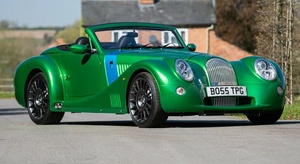On the subject of the 2a and "...a well regulated militia..."
The idea was to decentralize military power, but was not for the general populace to be able to rise up against the government. "Well regulated" meant that all members of the militia would be "regulars". It meant that all militia would be trained in the same manner, to follow the same orders the same way regardless of where they were from or who was leading them to be able to act as a "regular" fighting force. We would probably use the term "uniform" today to describe the same thing.
Keep in mind, that at the founding of this country, the United States was more like the EU than the single nation-state we think of today.
The idea was that each state would keep its own militia. The federal government would have the power to activate all the state militias for the communal protection of everyone. To act as an effective fighting force, all soldiers would need to be trained the same way so it didn't matter who was in charge of who. Orders would be given and followed the same way by everyone.
Most similar to the Swiss model, but on a much larger scale.
Part of the thinking was to take this power out of the hands of the president to keep from having a dictator who enforced their will with military rule.
Pretty quickly, this nation figured out that it needed a standing federal army, so that went out the window.
What does that have to do with anything? I don't really know. Except that it definitely doesn't mean the intention was for regular citizens to grab up rifles and be able to resist the Federal government, because they always knew that wasn't feasible.
On the subject of crafting laws:
I also think something needs to change. I think there need to be some effective laws. That means they need to be defined properly. I'm frustrated because I think the people who have the will to come up with restrictions that would keep people safe don't actually understand guns enough to craft legislation that is actually effective.
Someone brought up the question of "how do you define an assault rifle?" How do you allow people who live on ranches and farms the ability to have brush guns and varmint rifles to deal with pests, but minimize the ability of people to take powerful rifles into a school and murder people?
People focus on terms like "semi automatic", but that doesn't narrow things down. That just means that you can pull a trigger and fire a bullet without any intervening steps. Pretty much all modern revolvers are semi-automatic. But we're not worried that those are the guns that need to be regulated.
I'm not sure that focusing on definitions of the weapon are the right answer. I suspect regulating the people and situations that these weapons are available might be what is required.
On the subject of how many guns are already in circulation:
Maybe this isn't a problem that can be solved today. Maybe we need to put things in place so the problem is solved in 20 years. Maybe we can't fix everything in one big sweep today, but maybe we can make a huge dent and then see gradual change over time. If we did a buy-back on guns and put restrictions that require people to register and get licensed, that would take a lot of guns out of circulation. It would also cap more guns coming into markets. Yeah, lots of people would "lose all their guns in a boating incident", but they'd also keep those guns tightly secured. Over time, illegally held guns would surface and get destroyed.
Just because we can't solve a problem 100%, doesn't mean we can't take steps to mitigate how big of a problem it is.




































